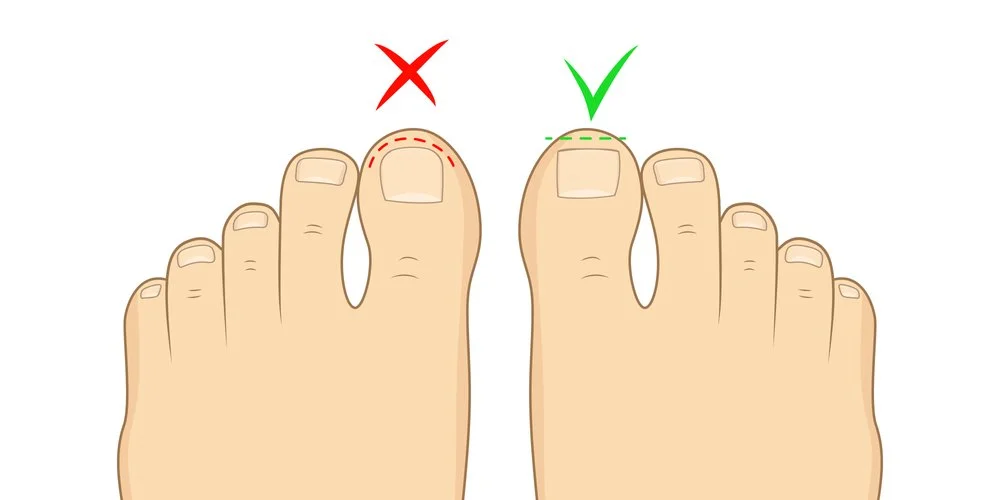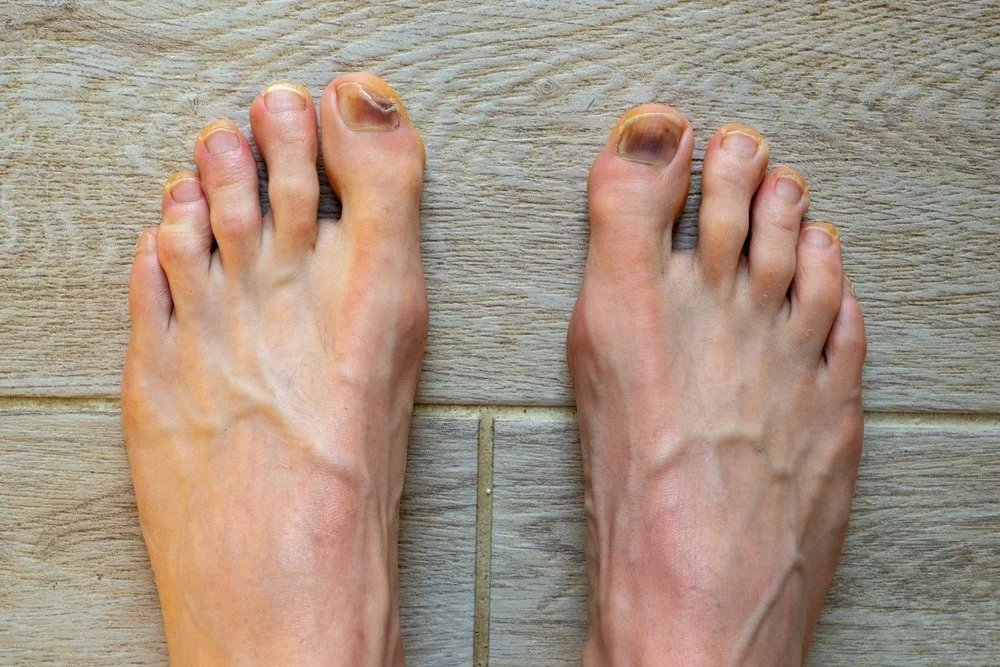Top 10 Toenail Health Tips for Athletes and Active Adults
As an athlete or active adult, your feet take a beating during training and competition. Proper athlete toenail care is crucial to prevent issues like black toenails from running, ingrown toenails in athletes, and fungal toenails in sports. With up to 79% of runners experiencing some form of injury annually, focusing on toenail health can keep you performing at your best without interruptions. Here's how to maintain strong, healthy toenails.
1. Wear the Right Shoes
Your shoes play a big role in toenail health. Choose footwear with a roomy toe box to avoid constant pressure on the nails. Shoes that are too tight or too loose can lead to black toenails, bruising, or ingrown nails. Replacing worn-out shoes is also important, as old footwear often loses support and causes unnecessary strain.Aim for sports-specific shoes that provide adequate cushioning—runners, for instance, should replace theirs every 300-500 miles.
2. Trim Toenails Correctly
Improper trimming is one of the most common causes of ingrown toenails. Always cut toenails straight across and avoid rounding the corners. Don’t trim them too short, as this can leave the surrounding skin vulnerable. A nail file can help smooth any sharp edges. This simple technique reduces the risk of trauma during high-impact activities.
3. Keep Feet Clean and Dry
Moisture is the enemy of healthy toenails. Wash your feet daily, dry them thoroughly (especially between the toes), and change socks if they become damp during activity. Opt for moisture-wicking socks and rotate your footwear to give shoes time to dry out.
4. Protect Against Sports-Related Trauma
Running, jumping, and sudden stops can cause repeated impact to the toenails. Trim nails before long runs or matches to prevent them from catching. Consider protective gear like toe sleeves or cushioned socks if you’re prone to bruised nails. Sports toenail injuries account for a significant portion of athlete downtime, with toe-related issues making up 19% of sports fractures in recent data.
Spotting and Preventing Runner's Toe
Runner's toe, characterized by black or discolored toenails from repetitive friction, affects up to 22% of marathon runners. It's caused by blood pooling under the nail (subungual hematoma) due to ill-fitting shoes or downhill terrain. Symptoms include pressure, blisters, or nail loss. For treatment, rest and elevate; if pain persists, consult a podiatrist for drainage. Prevent it by ensuring 1/2-inch toe space in shoes and using silicone pads.
5. Watch for Fungal Infections
Thick, discoloured, or brittle toenails are often early signs of fungal infection. Addressing this quickly prevents it from spreading. Keep toenails dry, avoid walking barefoot in communal areas, and seek professional treatment if symptoms persist. With 10% of active adults affected, early intervention is key to avoiding performance setbacks.
6. Care for Cuticles and Nail Beds
Healthy nails start at the base. Gently moisturise around the nail bed and cuticles to prevent dryness and cracking. Use creams or oils sparingly and avoid putting lotion between the toes where excess moisture can build.
7. Check Your Toenails Regularly
Make a habit of inspecting your toenails each week. Look for redness, swelling, changes in colour, or thickening. Early attention can prevent small issues from becoming painful conditions that interrupt your training.
8. Balance Training with Recovery
Overuse doesn’t just affect muscles — it also impacts your toenails. Give your feet time to rest and recover. If you’re increasing training intensity, be extra mindful of nail care to reduce the risk of trauma.
9. Use Clean Tools
Always trim your toenails with sanitised clippers and avoid sharing tools with others. Store them in a clean, dry place. If you use nail polish, allow your nails some time to breathe in between applications.
10. Know When to Seek Help
See a podiatrist if you experience ongoing pain, signs of infection, fungal changes that don’t improve, or recurring ingrown nails. Early treatment prevents long-term damage and keeps you active without interruption. Podiatrists for athlete feet can provide custom solutions like orthotics.
Conclusion
Healthy toenails are essential for athletes and active adults who want to stay comfortable and perform at their best. By wearing the right shoes, trimming carefully, managing moisture, and addressing issues early, you can avoid many common toenail problems like runner's toe or fungal infections that sideline up to 42% of amateur marathoners during training. Proactive care not only prevents injuries but can reduce recovery time by 50%. If pain or infection develops, professional care makes all the difference.
At Podhills Podiatry, serving the Hills District and Baulkham Hills, we’re here to help you keep your toenails—and your feet—strong, healthy, and ready for every step. For personalized sports podiatry advice, contact us today! Schedule a free athlete foot assessment— book or call and let's get you back to crushing miles without missing a step!
FAQs
-
Repeated friction from tight shoes or downhill runs leads to subungual hematoma (blood under the nail). Trim nails short and ensure 1/2-inch toe space to prevent it.
-
Soak in warm water, gently lift the nail edge, and wear open-toed shoes. If infected (red/swollen), see a podiatrist—don't cut it yourself.
-
Yes—thick, brittle nails cause pain and imbalance. Keep feet dry, use antifungal powder, and rotate shoes. Early OTC treatment resolves 80% of cases.
-
If pain persists >1 week, nails change color/shape, or you have recurring issues. Custom orthotics can prevent 40% of sports toenail traumas.
-
They're a start (reduce slippage), but pair with proper trimming and padded insoles for full defense against trauma and infections.



